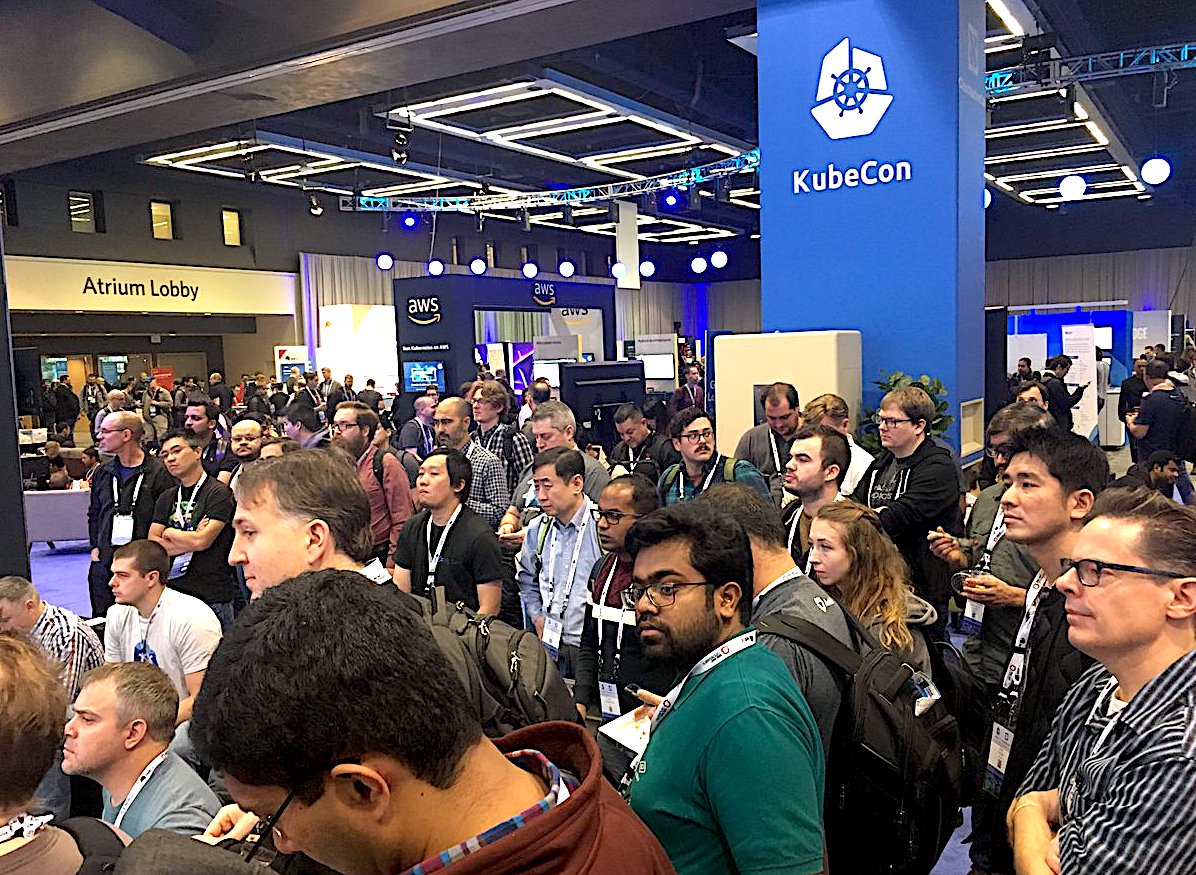 CLOUD
CLOUD
 CLOUD
CLOUD
 CLOUD
CLOUD
The core Kubernetes codebase has begun to stabilize, a trend made apparent from the fact that there was only one new open-source code contribution announced so far at this week’s KubeCon + CloudNativeCon 2018 in Seattle.
The main action in the Kubernetes market has shifted to commercial solutions. At KubeCon this week, there was a wide range of new product announcements and enhancements to existing Kubernetes offerings. These new solution capabilities deliver value into enterprises’ existing cloud-native computing environments and also provide tools for extending Kubernetes into new clouds, to the edge and into serverless deployments.
As expected, many of this week’s announcements focused on offerings that address enterprise requirements for Kubernetes in fully managed services, hybrid clouds, storage orchestation, cluster security, container monitoring and application programming interface management. And, considering how embedded Kubernetes has become in many enterprise application environments, it was no surprise that many KubeCon announcements had a clear DevOps focus, such as:
Expanding the deployment range for Kubernetes into mesh and edge environments was also a prominent theme in several high-profile KubeCon announcements:
But the most important announcements at KubeCon were those that focus on integrating the Kubernetes container orchestration fabric with the new world of serverless computing. That’s because enterprises are beginning to require the ability to build, deploy, and manage containerized microservices that can be programmed using serverless abstractions, sometimes known as the “function-as-a-service” paradigm.
Throughout 2018, the principal industry announcements around the integration of Kubernetes and serverless have been focused on the open-source Knative project. Developed by Google in collaboration with Pivotal Software Inc., IBM Corp., Red Hat Inc. and SAP SE, Knative, now in version 0.2, is a Kubernetes-based platform for driving DevOps workflows around the unified development of serverless and containerized apps for deployment across heterogeneous public and private cloud platforms.
In July, Google made Knative available to users via a serverless add-on to its Google Kubernetes Engine. It enables developers to build, serve and manage container-based serverless applications that can be easily moved between cloud providers. However, Knative is still incomplete, in the sense that it doesn’t interact with Azure functions or AWS Lambda functions.
At this week’s KubeCon, several of Knative’s primary developers announced that they have implemented it in their cloud-native solutions:
In addition, GitLab and TriggerMesh announced GitLab Serverless which enable enterprises to run serverless workloads on any cloud using Knative. The solution enables businesses to deploy serverless functions and applications on any cloud or infrastructure straight from the GitLab UI using open source Knative. It will be available in GitLab 11.6, scheduled for release on Dec. 22.
Another serverless announcement at KubeCon, albeit without a Knative tie-in, came from Oracle. The company announced the Oracle Cloud Native Framework. Among that framework’s many features is the new Oracle Functions, a fully managed serverless cloud service based on the Oracle-developed open-source Fn Project. Oracle Functions are Docker-based multitenant serverless functions that can be orchestrated through Oracle Container Engine for Kubernetes on Oracle Cloud Infrastructure. They allow users to only pay when a function is invoked but pay nothing when the code is not running.
Other industry efforts are bringing serverless, containers, and even virtualization into closer alignment in cloud-native computing. Just a few weeks ago at re:Invent 2018, Amazon Web Services announced Firecracker, a lightweight, open-source virtual machine monitor that enables creation and management of secure multitenant containers and AWS Lambda functions in serverless clouds.
This week’s KubeCon announcements around Knative and similar initiatives are clear milestones on the path to hybrid serverless multiclouds. As I noted recently in this Wikibon post, we expect that Knative, in conjunction with other projects such as Virtual Kubelets, will catalyze development of more varied and sophisticated hybridizations of serverless and containerized Kubernetes-orchestrated microservices.
Check out what Kelsey Hightower, staff developer advocate for Google Cloud Platform, had to say on theCUBE at KubeCon on what it means to take a Kubernetes-orchestrated container and put it into a serverless function:
Support our open free content by sharing and engaging with our content and community.
Where Technology Leaders Connect, Share Intelligence & Create Opportunities
SiliconANGLE Media is a recognized leader in digital media innovation serving innovative audiences and brands, bringing together cutting-edge technology, influential content, strategic insights and real-time audience engagement. As the parent company of SiliconANGLE, theCUBE Network, theCUBE Research, CUBE365, theCUBE AI and theCUBE SuperStudios — such as those established in Silicon Valley and the New York Stock Exchange (NYSE) — SiliconANGLE Media operates at the intersection of media, technology, and AI. .
Founded by tech visionaries John Furrier and Dave Vellante, SiliconANGLE Media has built a powerful ecosystem of industry-leading digital media brands, with a reach of 15+ million elite tech professionals. The company’s new, proprietary theCUBE AI Video cloud is breaking ground in audience interaction, leveraging theCUBEai.com neural network to help technology companies make data-driven decisions and stay at the forefront of industry conversations.